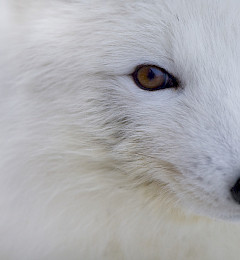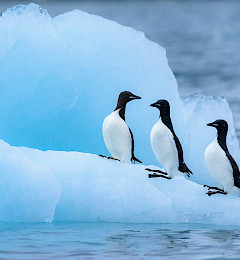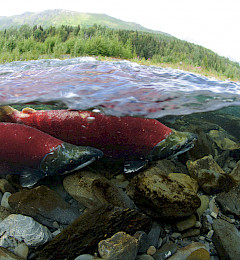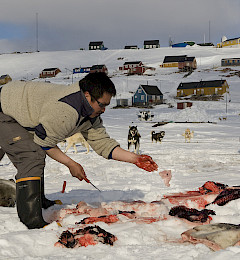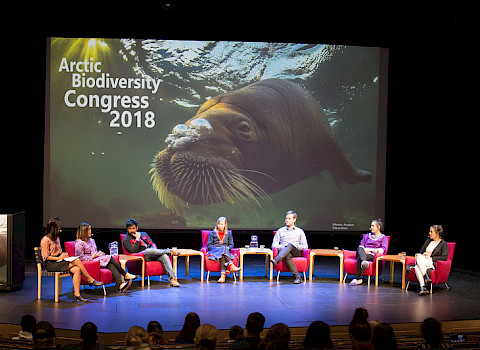
Improving knowledge and public awareness
Building knowledge to support decision-making and recognizing the importance of Arctic biodiversity and its contributions to human well-being.
Current knowledge of many Arctic species, ecosystems and their stressors is fragmentary, making detection and assessment of trends and their implications difficult for many aspects of Arctic biodiversity. Effective, targeted conservation actions require reliable, up-to-date, easily accessible information.
Important knowledge about the majority of Arctic biodiversity remains to be documented. While the distributions of many mammals, birds and vascular plants are known, large gaps exist in knowledge about even the distribution of most other species—not to mention the many species likely remaining to be discovered. When it comes to population densities, sizes and trends, the knowledge gaps grow significantly larger. Even some commonly harvested species of mammals, birds and fish are not monitored adequately to ensure accurate and early determination of population trends. Most species that are not harvested or of direct value to humans are not monitored at all. Even for the few species where adequate, ongoing monitoring exists, the mechanisms that drive these population trends are in most cases poorly understood at best. Filling gaps in our knowledge is particularly crucial for important aspects of invertebrates, microbes, parasites and pathogens. These organisms are vital for ecosystem functioning but are all too often overlooked in the documentation and assessment of biodiversity and ecosystem health.
If decisions regarding human activity in the Arctic are to be supported with adequate, timely and up-to-date biodiversity information, there is a need for concerted efforts to collect, analyze and make readily available those data. Improved inventories, baselines, monitoring and research are needed, involving Arctic peoples and their knowledge. Key indicators of ecosystem structure and function should be identified to contribute to ecosystem-based approaches to monitoring and management.
In addition to its intrinsic worth, Arctic biodiversity provides innumerable services and values to people. Arctic habitats are home to species with remarkable adaptations to survive in extreme cold and highly variable climatic conditions. Millions of migratory birds breed in the Arctic and then fly to every continent on Earth, contributing to global biodiversity and ecological health. More than a tenth of the world’s fish catches by weight come from Arctic and sub-Arctic seas. Tourists are travelling north in increasing numbers, and globally there is a growing appreciation of Arctic species and ecosystems as increasingly rare examples of largely pristine biodiversity.
The Arctic is home to more than 21,000 known species of highly cold-adapted mammals, birds, fish, invertebrates, plants and fungi including lichens, as well as tens of thousands of microbe species. These include iconic species such as polar bear, muskox, bowhead whale, narwhal, walrus, caribou, Arctic char, ivory gull, Arctic fox and snowy owl as well as thousands of lesser known species. In addition to species themselves, the Arctic also harbors a diversity of marine, freshwater and terrestrial habitats, such as vast expanses of lowland tundra, wetlands, mountains, extensive shallow ocean shelves, millennia-old ice shelves, pack ice and huge seabird coastal cliffs. Building a global appreciation for these species, ecosystems and their functional roles will help promote their conservation for the benefit of future generations.
 Arctic Council Working Group
Arctic Council Working Group 




